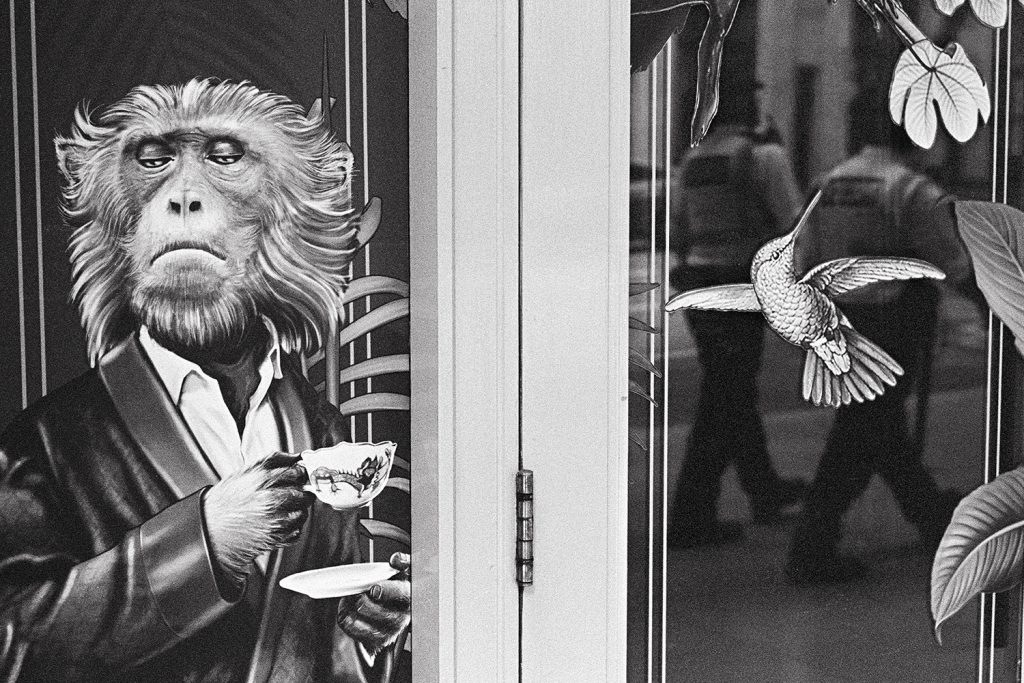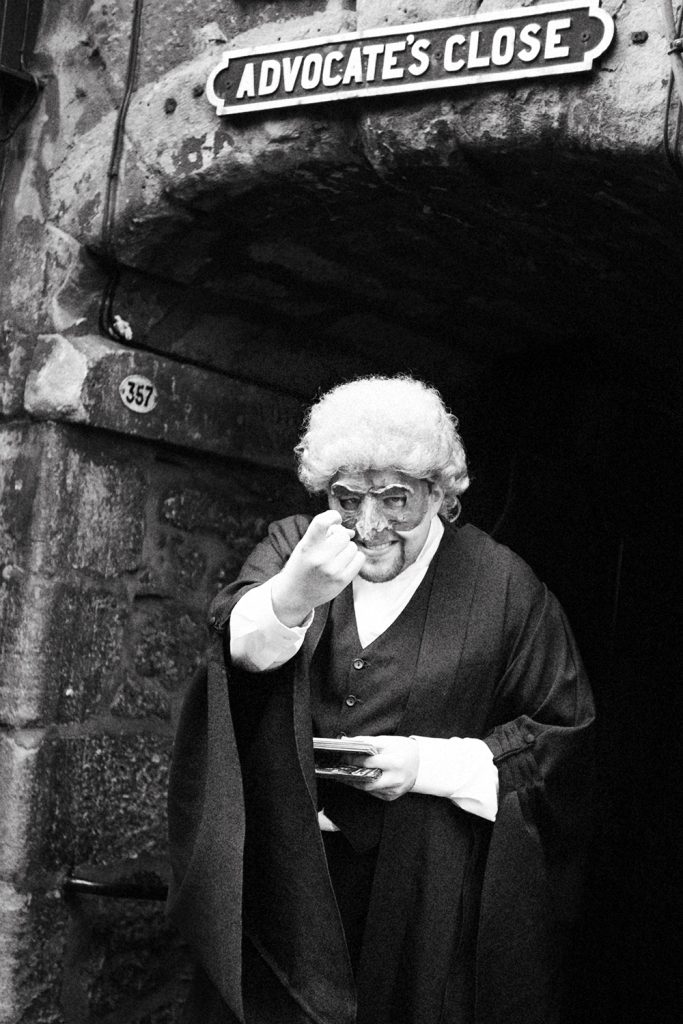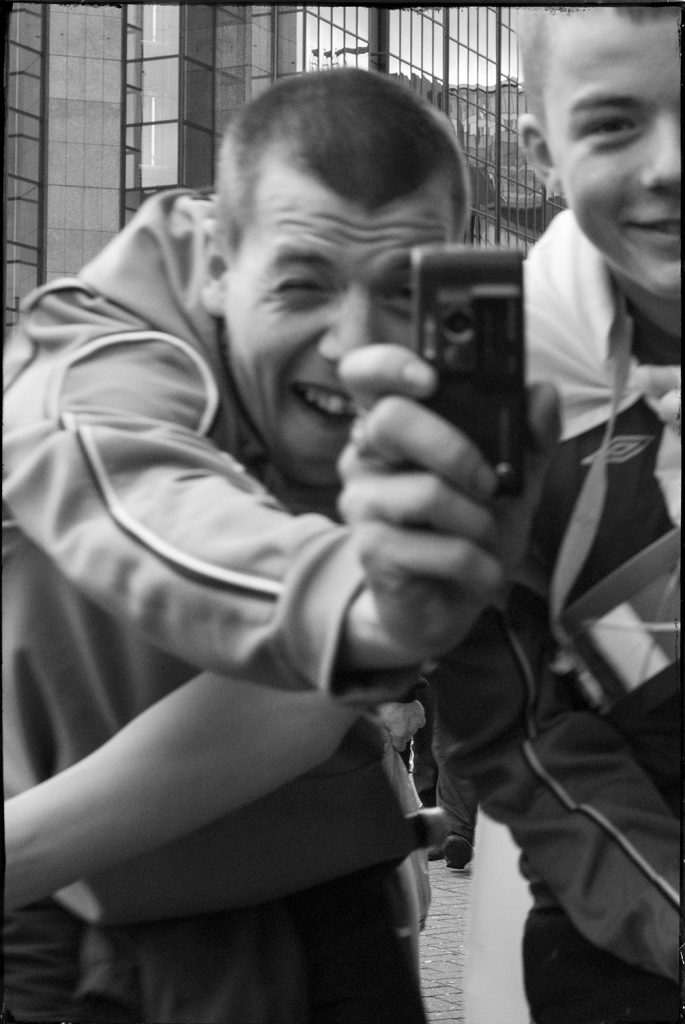
Speak to anyone about street photography outside that particular niche and inevitably someone will ask, is it legal? It may come right out of the gate, or it may follow a line of enquiry from whether permission is needed, through to if people become upset, arriving at the topic of its inherent legality.
With so much public consciousness focused on image and privacy today, it can be natural curiosity for people to question the intent, purpose, and practice of street photography. I begin, as has become custom, with a brief explanation of what street photography is to me – photography of life as it is happening, and the remnants of that life – a, hopefully artistic, record of life at this particular time. In the hope of igniting some excitement for the photographs, I will talk of Cartier-Bresson, Frank, Erwitt, Winogrand and the vital photography they have made. (I tend to leave Gilden aside, for the beginner). At worst, or as devil’s advocate, someone may imply ill will in the practice, malevolence or malfeasance, and I often refer back to photographs from the past.
In a recent conversation, I talked of an exhibition from earlier in the year, of photography from the infancy of post-communist Poland; some pictures made by photojournalists, others by members of the public, and a collection by those who may have considered themselves street photographers. Wonderful, colour photographs looked upon now with such nostalgia by so many visitors to the gallery. When people are suspicious of voyeuristic intent in street photography, I explain that many of those photographs looked upon so fondly wouldn’t exist without your local, friendly street photographer.
Do You Need Permission?
It is natural for the conversation to turn to permission or the lack thereof. In these situations, I ask the person if I can take their photograph, and if they agree they begin fussing with clothes, hair, the way they stand, or the expression on their face – in short, it is an easy way to demonstrate how a photograph changes when the subject is aware of the camera. To preserve the photograph as we see it, it is better to ask forgiveness than to seek permission.
I would like to think it’s my lyrical, rhetorical personality drawing my conversant in, however, I suspect the subject is just interesting, so the next question tends to be how to mitigate conflict if it raises its ugly head.
Dealing With Conflict
The truth of the matter is that while it does, it is rare. Almost all situations, be they quizzical looks, disapproving tuts, or hands in front of the camera, can be resolved with a smile and a thank you. A good “bedside manner” is required when the infrequent need for conversation arrives. With an air of confidence, and a friendly, respectful attitude, enter into the exchange in good faith.
When the other person less angry, more annoyed, I find introducing myself and inviting them to find more of my work will remove any suspicion of my intent. I may explain what made me trip the shutter – that the scene was interesting, amusing, surreal – and what I liked about it. If, in the worst case, the person turns verbally aggressive, I don’t mirror the anger as I know from bitter experience, this will only escalate the situation. I politely thank them again, and walk away.
Shooting in film, I can’t delete a photo in the moment even if asked to do so. There are several, strongly held, opinions on whether one should delete a photo if asked. It is a choice each photographer has to make on their own. Unless it’s a top-50, one-of-my-best, photograph, I likely won’t use it. For the most part, I won’t enjoy the feeling of looking back and remembering that confrontation. One wants to be fair and treat others with fairness and respect so I try to live by the very simple rule of Don’t Be a Dick. And, of course, it’s best not to appear on the wrong end of an unnecessary lawsuit.
So, Is Street Photography Legal?

It is at this point my interlocutor clocks the mention of a lawsuit and asks our all-important question. Is street photography legal? The short answer is, depending on where you are photographing, most probably, yes. Unfortunately, there is a much longer answer, like so much in life, that is not as simple as one would like.
The first consideration is where you are in the world. I can speak with some authority for Poland and to some degree the UK, and I will concentrate on these countries for the rest of this article. If you are elsewhere, Wikimedia has an excellent breakdown of where in the world consent is required to take a photograph, publish a photograph, and use a photograph for commercial purposes, with any exceptions there may be.
Within Poland, there is no legal requirement for consent to make photographs of people in public. In the United Kingdom, there is an exception for the requirement of consent when there is a reasonable expectation of privacy – though this is something that is certainly nebulous when in public. In real terms, then, photographing is legal if done in an ethical, responsible, and respectful way.
Questions of consent only arise when there is an intention to publish a photograph. Doing so means posting online on a website, social media profile, or gallery. It may mean physically printing the photographs for use in an exhibition or indeed publishing them in a book.
To be very clear, then. Is street photography legal? The taking of the photograph is perfectly legal. What you choose to do with the photograph afterwards is where the legal obligation appears.
The Letter
Sticking to the letter of the law (the letter!), photographers have two options. The first is to photograph for one’s self. To make the photographs for the love of it. Keeping them in a drawer. To look upon them lovingly, now and again. This may sound facetious. I do not mean it to. Some people do this, with no real intention to show their photos to others.
The other option is to seek the consent of the subject. Either before or after making the photograph. To ensure all legal boxes are ticked, a standard model release form can be carried and signed by the subject, consenting to the use or publication of the image. For street portraitists, this may be a great approach, however, for a street photographer, it is an unwieldy solution.
The Impracticality of Release Forms
Setting aside the aforementioned change to the nature of the photograph, there are other issues that make seeking consent or written release impractical. By way of example, I may come home from a day of shooting with 2, maybe 3, rolls of film exposed and ready for developing. There may be 4 or 5 photos that excite me, others that are decent, and a number that I’ll never look at again. Nevertheless, I may return home with 108 signed release forms, the majority to be deposited straight in the bin. And that’s only if there was 1 person appearing per photograph. Imagine, then, street scenes on a busy Saturday afternoon, the time lost, and the number of unsuspecting people to chase after in the hope of emerging with a signed release. It quickly becomes a farce and renders the whole practice impossible.
Most countries have small specificities where the publication of photographs without consent is acceptable. In Poland, publishing is acceptable if the person captured is a small detail of a larger whole. Think of wide shots of a protest or a gathering. Consent is not required, if covering a particular person within the image, with a thumb, does not change the intent or aesthetic of the photograph. In most street photography, however, this is rarely the case. Removing the person would substantively change the photograph.
To Publish, Or Not To Publish?

To publish, or not to publish is the choice. Street photography is a niche practice and though popular with many photographers, it does not come close to the audience that portrait, landscape, or travel photography has. The likelihood that subjects will ever see themselves in your photos is vanishingly small, though it does happen.
If the subject one day does find the photograph then it is normally with surprise, bewilderment, amusement, or delight. Rarely is it in embarrassment or anger. I made the photo above at an Orange Walk in 2007 while working on a defunct project on religious sectarianism in Scotland. I posted it to my Instagram in 2021 and a few days later a comment appeared: The wee boy on the left, that’s me! 😀 The lad, then 18, was happy to find the photo.
On the rare occasion the subject is upset and makes a complaint, then again it is up to the photographer to decide how to resolve the situation – though the hope is that both sides will want to come to an amicable agreement. Once before, for instance, I offered to send the person a print of the photograph, which they gratefully accepted. I haven’t yet had any request or need to remove photographs from my website though I would discuss it with the person if they asked me to.
In the event the photographer feels that the photograph satisfies the legal requirements for publishing then they may stand their ground. It may end up in court, and quite literally the circumstances will be considered on a case-by-case basis, though this is outside of the scope of this article.
TL;DR?
Is street photography legal? In Poland, the UK, and in most countries across the EU, the practice of making street photography is still, on the whole, permitted – or at least not prohibited by law. It is important, nevertheless, that when doing so to treat people with respect, empathy, and have a good bedside manner while doing so.